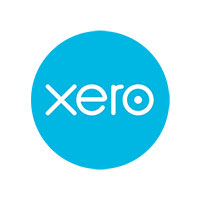
From 6 April 2018, the tax-free dividend allowance has reduced from £5,000 to £2,000.
This change will impact investors and also employees and directors of small businesses who choose to pay themselves through dividends.
Dividend tax
When you own shares in a company, you may receive some of the profits made in the form of dividends. Dividends are a form of taxable income, but dividend tax rates are different from the rates for tax on savings interest, your salary or your pension.
Dividend tax rates 2018/19
From 6 April 2018, the first £2,000 you earn in dividends is tax free. This tax-free allowance has reduced from £5,000 in the 2017/18 tax year.
For dividends you receive above the £2,000 allowance, you must pay tax. The dividend has the top slice of your income.
The table below shows the dividend tax rates for basic, higher and additional-rate taxpayers.
| Income tax band | Dividend tax rate |
| Basic rate | 7.5% |
| Higher rate | 32.5% |
| Additional rate | 38.1% |
What rate of dividend tax will I pay?
You will pay income tax according to three marginal tax bands. To find out the rate of dividend tax you have to pay, you will need to add your dividend income to your other taxable income.
If your dividend income pushes you above a certain threshold, you will have to pay a higher rate of tax.
| Tax rate | Earnings | 2018/19 income tax rate |
| Personal allowance | £0-£11,850 | 0% |
| Basic rate | £11,850-£46,350 | 20% |
| Higher rate | £46,350-£150,000 | 40% |
| Additional rate | More than £150,000 | 45% |
Note, the thresholds and tax rates for Scottish taxpayers are different.
For example:
Your annual income from your job is £35,000
You receive £15,000 in dividend income in that year.
Therefore, your total income is £50,000.
You would pay the following in dividend tax:
- 0% tax on the first £2,000 of dividends, thanks to the tax-free allowance
- 7.5% on the next £9,350 of dividends, using up the remaining £9,350 of the basic-rate tax threshold (note – although the first £2,000 of the dividend is free of tax, it utilises £2,000 of the basic rate band)
- 32.5% on the last £3,650 of dividends, as this is above the higher-rate tax threshold.
How do I pay dividend tax?
For the 2018/19 tax year, you don’t need to do anything if you earn up to £2,000 in dividends. This will form part of your tax-free dividend allowance.
If you earn between £2,000 and £10,000, you will need to inform HMRC. You can either:
- ask HMRC to adjust your tax code in order to take the tax from your salary or pension; or
- fill out a self-assessment tax return.
If you earn more than £10,000 in dividends, you will need to complete a tax return.
For help and advice in completing your self-assessment, or if you would like us to file on your behalf or run a check on your return, talk to us at Baxter & Co without delay. You can contact us on 01689 877081, asking for Vinnie, John or Mark or by completing our online form.




